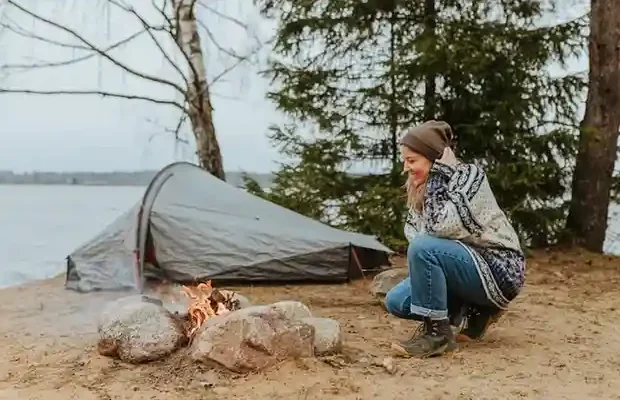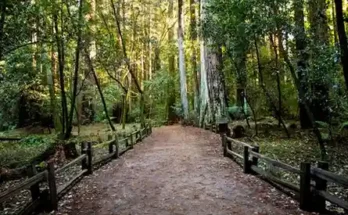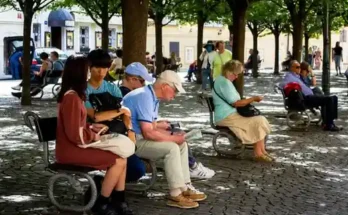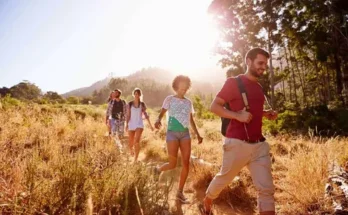The World Beyond Walls:
In a world dominated by screens, schedules, and artificial light, the outdoors remains one of the last places where time slows down. It is a realm not controlled by alerts or appointments, but by birdsong, breeze, and changing light. The outdoors is not just a setting. It is a living force that waits patiently to welcome us back. Whether we live in a city apartment or a rural home, there is something deeply human about stepping outside and reconnecting with the earth beneath our feet.
Yet in today’s fast-paced life, we often forget how vital that connection truly is. The outdoors is more than recreation. It is restoration. A natural medicine for the body, mind, and spirit. As we navigate modern pressures, finding time to step outside is no longer a luxury. It is a necessity.
The Many Faces of Outdoor Activities:
- Physical Adventure Activities
Some outdoor experiences push us to our physical edge. These include hiking, mountain biking, trail running, rock climbing, kayaking, and skiing. These activities demand effort and grit but reward us with breathtaking views, elevated mood, and a profound sense of accomplishment. They test the body, sharpen the mind, and forge resilience.
These adventures are not reserved for athletes or professionals. Even a beginner can take a slow hike through a forest or paddle along a quiet lake. The goal is not performance. The goal is presence.
- Leisure and Relaxation Outdoors
Not every outdoor activity needs to be intense. There is a beautiful simplicity in lying on a picnic blanket, reading under a tree, or taking a gentle walk in the evening. Fishing, birdwatching, and stargazing may seem quiet on the surface, but they offer deep mental clarity. These activities teach patience, attention to detail, and appreciation for the stillness around us.
Nature offers an antidote to overthinking. When we sit quietly by a riverbank or listen to wind move through tall grass, we start to hear ourselves again. In those quiet moments, we find peace that no screen can offer.
- Social and Group Outdoor Activities
The outdoors brings people together. Camping trips with friends, beach volleyball games, weekend barbecues, and family park outings are just a few examples of how outdoor spaces can nurture community and connection. Unlike indoor gatherings, outdoor social events create space to laugh louder, move freely, and breathe deeply.
Group activities also build stronger bonds. Shared experiences like completing a hike or exploring a new area create lasting memories. These social ties, formed under an open sky, tend to be more meaningful than those built through small talk alone.
- Mindful and Wellness Focused Activities
Yoga on the grass, forest bathing, outdoor meditation, or walking in silence through a botanical garden are activities that nurture mental wellness. These practices blend movement with mindfulness and help us become more attuned to our inner world while being present in the outer one.
Breathing in fresh air while grounding yourself in natural surroundings has been shown to lower cortisol levels and reduce symptoms of anxiety and depression. It reconnects us with rhythms that our bodies naturally understand but often forget due to modern stressors.
Why Outdoor Activities Matter in Modern Life?
- Physical Health Benefits
Regular outdoor activity improves cardiovascular health, strengthens muscles and bones, boosts immunity, and helps regulate sleep. Sunlight stimulates vitamin D production, which supports everything from bone health to immune function.
Unlike indoor exercise, outdoor physical activity engages the body more holistically. Navigating uneven ground, adjusting to wind resistance, and moving in natural light activates more senses and promotes more dynamic health.
- Mental and Emotional Wellbeing
Spending time outside has powerful psychological effects. Studies show it enhances focus, boosts creativity, reduces symptoms of depression, and encourages a calmer mindset. According to the University of Minnesota’s health and wellbeing research, spending time in natural environments reduces stress hormones and improves emotional stability. Even a brief escape to green spaces during a lunch break can make a noticeable difference.
Emotions that feel heavy indoors often become more manageable when given space to breathe outdoors. A walk under a wide sky can be more effective than hours of problem-solving at a desk.
- Deepened Connection with the World
Outdoor activities encourage us to feel part of something larger. They remind us of cycles, seasons, and systems beyond human control. When we watch birds migrate, flowers bloom, or snow fall, we become participants in the natural story of life.
This connection not only grounds us but fosters responsibility. When we care about the outdoors, we begin to protect it. We choose better, consume less, and advocate more.
Managing Outdoor Time in a Busy Life:
- Prioritizing Small Moments
The biggest mistake is believing outdoor activity requires large blocks of time. A fifteen minute walk around your neighborhood before work. A short sunset break after dinner. Eating your lunch on a park bench instead of your car seat. These moments matter.
Busy lives can still accommodate outdoor activity when we shift our mindset. Not everything needs to be a full-day hike. Nature rewards consistency, not complexity.
- Blending Outdoor Time with Routine
Look for opportunities to move existing routines outside. Take phone calls while walking around your block. Do your morning stretches in the backyard or balcony. As suggested by Wikipedia’s Outdoor Recreation entry, integrating nature into everyday habits can improve physical health and promote mental relaxation. Turning ordinary habits into outdoor moments creates natural exposure without needing extra hours in the day.
This integration approach also helps form lasting habits. Once you start feeling the difference, the outdoors becomes a lifestyle rather than an event.
- Using Technology Mindfully
Apps that track steps or guide outdoor meditation can be helpful tools. Online maps can lead you to new parks or quiet spots nearby. The key is to use technology to enhance your connection with nature, not distract from it.
Avoid excessive documentation or scrolling while outside. Snap one picture if you must, then put your phone away. Be where your feet are. Let the experience breathe on its own.
- Planning with Intention
Set goals that are realistic. Maybe one hike per month. Maybe three walks per week. Write it down. Share your goal with a friend. Make it part of your calendar like any other important meeting. The outdoors deserves a slot in your schedule because your wellbeing depends on it.
Start small and build naturally. Let it become part of your identity. Not as someone who occasionally visits nature, but as someone who belongs to it.
Conclusion:
You do not need perfect gear, a remote cabin, or an Instagram account filled with wild places to enjoy the outdoors. All you need is willingness. A door to open. A step to take. A choice to pause and breathe in the world around you.
The outdoors is not somewhere you go. It is something you return to. A part of yourself that has always known how to heal, how to play, how to be still. No matter how busy or loud life becomes, the sky remains. The wind waits. The ground is ready to meet your feet. All you have to do is show up.




